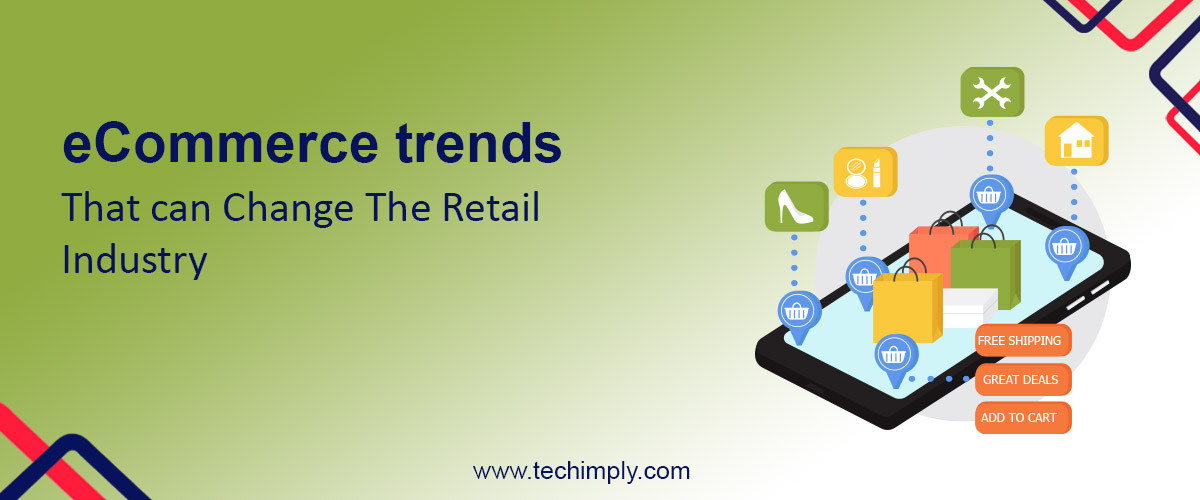Retailers expect eCommerce to account for 20% of their sales in 2020. E-commerce is on the rise, and retailers are starting to take notice. Many traditional brick-and-mortar retailers are already investing in their e-commerce divisions. Stores have begun to understand that having an online presence will help them stay competitive in the retail sector. Increased spending means increased competition. Here's a look at where e-commerce is heading, which trends are changing the retail industry, and how businesses can successfully market themselves online.
- Reasons for rapid eCommerce growth
- Increased global internet penetration has helped boost growth for companies with an online presence. It has also made it easier than ever for brands to sell products worldwide using various digital marketing strategies. This includes social media marketing, search engine optimization (SEO), email marketing, website optimization, and more.
- A recent Global Ecommerce report from eMarketer predicts that retail eCommerce sales will total 2.5 trillion by 2020. To gain a competitive edge, brands need to understand what e-commerce trends can alter the retail industry in the near future.
- Social media engagement
- Social media engagement is one of the most important aspects of an online marketing campaign. 94% of marketers worldwide claim social media has helped improve brand awareness, while 85% believe it has improved traffic to their websites. Social media platforms like Facebook, Instagram, and Twitter allow retailers to inform customers about deals and updates on new products while showing off what other shoppers are purchasing.
- Twitter recently made headlines for being one of the top companies using much planning to increase advertising and hiring in 2016. Although it is unclear how Amazon will affect the retail landscape in the coming years, it is clear that retailers must continue to offer a compelling digital presence for customers if they want to stay relevant in today's market.
- Emerging trends
- This list takes a look at 5 emerging e-commerce trends: product reviews, social media boosting SEO, customized shopping experiences, omnichannel selling, and 3D printing.
- Product reviews: Product reviews can be helpful for shoppers who want additional insight into a product before making a purchase decision. However, this is not just about adding user-generated content (UGC) or using customer testimonials on your website. Instead, recent e-commerce trends show retailers are using more sophisticated data analysis to determine what users want before they even purchase a product. A study by the Boston Consulting Group shows that 79% of shoppers use online reviews as a buying guide. Not only do product reviews give consumers insight into a specific brand or retailer's past performance, but it also helps them make sure they're buying from a company they can trust.
- Omnichannel selling: Retailers have always been concerned with providing consumers with accurate information about their products and maintaining an ethical business standing. Now, given search engines' reliance on user-generated content, companies need to protect against false advertising claims being made and ensure the accuracy of product information that appears on the web according to RemoteDBA Social media has become an increasingly important tool for companies looking to create better customer relations and improve brand awareness. Retailers use social media platforms like Facebook, Instagram, Twitter, Pinterest, and more to interact with current customers while gaining new followers. A recent survey by the Content Marketing Institute found that 80% of marketers felt they effectively built relationships with consumers through content marketing strategies. Many brands are now investing not only in organic posts but also paid advertisements to ensure their messages are reaching customers across various platforms. This includes promoted tweets on Twitter or ads on Facebook Marketplace that allow retailers to showcase their products to customers who haven't even visited their website yet.
- Coupons: are one of the oldest forms of online marketing on the Internet. Retailers offer discounts on products to entice consumers into purchasing while also capturing their contact information for future promotions. While this has been around for years, it is essential to note that coupon usage continues to grow among shoppers looking for ways to save money online and in traditional brick-and-mortar stores.
Forrester Research found that 69% of consumers used coupons when shopping for a home personalized product, while 48% said they would use them on apparel purchases. Retailers need to understand how many users view their website each month using digital analytics software like Google Analytics. This allows companies to collect consumer data even if they're not actively searching for a brand or product.
As stated in the Forrester study, marketers are looking to increase online sales and prospective customer engagement. This means that retailers should focus on user-friendly websites with easy navigation to boost their rankings in search results pages.
Google Panda was created to improve the overall quality of search engine result pages (SERPs). Google wants to push websites with content written specifically for users, not webmasters looking to manipulate page rankings simply by cramming keywords into HTML tags.
According to Moz, many brands have felt the effects of Panda 4.2. If you're currently ranked at the top of SERP, then there is no need to panic just yet since this update will primarily affect sites with sub-par content or have too many ads overloading text.
- One page checkout
- Retailers are now focusing on one-page checkouts to increase conversions and gain user trust by giving consumers a streamlined buying process that doesn't take up much time. A study conducted by Retail Dive found that 56% of consumers ranked faster online transactions as more important than saving money. In comparison, 48% indicated they would abandon their cart if an online retailer didn't allow them to checkout using Apple Pay. Eighty-two per cent said they would leave sites due to slow speeds.
- One way brands can ensure consumers know exactly what they want is through the use of personalized messaging. As stated in this Builtvisible infographic, companies should target users with specific product profiles based on previous browsing behaviour. For instance, if someone is interested in high fashion, they probably wouldn't buy sports apparel even if it was heavily discounted.
- As consumers become more tech-savvy, retailers need to provide third-party vendor services that streamline the entire buying process. This includes offering deals at checkout with coupons or implementing social media marketing strategies that can be used to grow your business awareness via influencer connections. "A recent study by marketing firm The Prosper Group found that 60 per cent of consumers would trust brands more if they engaged with them on social media."
Along with personalized messaging and one-page checkouts, product reviews are also an important component when determining whether people want to purchase online.






